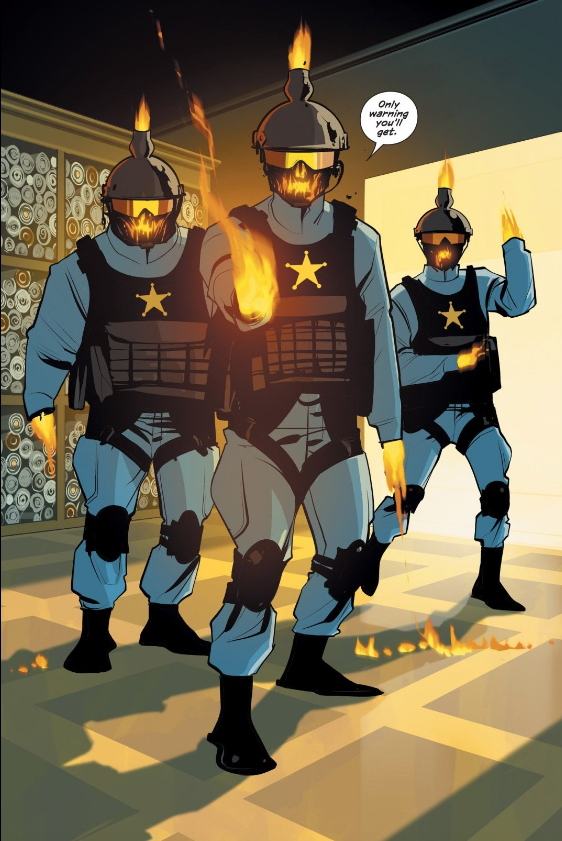Comic of the Week: The Life and Death of Toyo Harada #1
By d. emerson eddy — Since Valiant Entertainment was acquired fully by DMG last year, the comics have been undergoing a bit of a change. Movement, change, and progress had been one of the themes that outgoing Editor-in-Chief Warren Simons instilled in the publisher since it began operation in 2012, but there's been a bit of uncertainty with Valiant's future direction as editorial has switched about. This current “Breakthrough” initiative appears to be a melting pot of old and new ideas. Outside of Punk Mambo, the series seem to be taking the next steps in a number of ongoing narratives, like Ninjak's story in Killers, the future of 4002 AD in Fallen World, and Toyo Harada's next stage of trying to save the world from itself in this series, The Life and Death of Toyo Harada.
After guiding us through the spark of creation in the universe and a tour of some of Toyo Harada's history from birth through his genesis as a psiot, Joshua Dysart picks up on threads from Imperium and X-O Manowar, as if there's not been a missed beat in the past almost three years. The explosion of cast members, motivations, and such may seem a bit overwhelming to new readers, but, personally, I think it adds a bit of a feeling of chaos and confusion that helps add atmosphere to the story. I've read those previous stories, and though they do give more context to who the characters are, what Harada's motivation has been, and why exactly that debris ring is out there, it doesn't necessarily inform anything for the story that isn't present here in this script. Everything you really need to enjoy it is already here. Toyo Harada sees himself largely as a savior of mankind, who will do anything to essentially save it from itself, redistributing knowledge and power to ensure equality and survival, and those ideas are fascinating.
The story is beautifully brought to life by Mico Suayan, Cafu, and Andrew Dalhouse, with Suayan handling the flashbacks, Cafu the modern sequences, and Dalhouse providing colors atop. The opening spread of creation, from darkness to the spark of light and formation of stars and galaxies is breathtaking. The beauty of the artwork helps ground us through the existential narration. And adds an extra layer of horror when we see Hiroshima at ground level.
Overall, The Life and Death of Toyo Harada #1 gives us a bit more insight into one of Valiant's major players, raising an important question of what kind of monster do you possibly have to become in order to save mankind and what kind of monster you would have to be in order to stop him. It's an interesting moral quandary that Dysart, Cafu, Suayan, Dalhouse, and Sharpe set us down the road toward.
The Life and Death of Toyo Harada #1
Writer: Joshua Dysart
Artists: Cafu & Mico Suayan
Colorist: Andrew Dalhouse
Letterer: Dave Sharpe
Publisher: Valiant
Price: $4.99
Check out more of d. emerson eddy’s Comic of the Week feature on our Lists Page.
d. emerson eddy is a student and writer of things. He fell in love with comics during Moore, Bissette, & Totleben's run on Swamp Thing and it has been a torrid affair ever since. His madness typically manifests itself on Twitter @93418.






